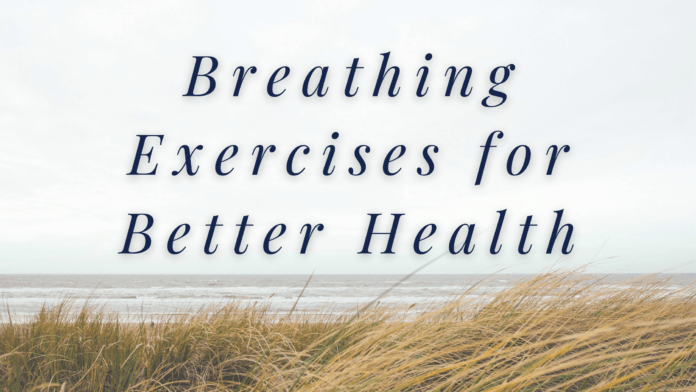Table of Contents
Breathing is the basis of our being. It’s an involuntary act that sustains us. What if I said that Breathing could lead to deep relaxation and lower stress levels? In today’s hectic world, spotting a tiny bit of tranquility is an absolute prize. For those who are meditators, stress-management seekers, and others who are navigating the wellness and health community, less-known breathing techniques can add a glimpse of tranquility.
The Breath Beneath the Surface: Understanding Its Power
Before we investigate these secrets of Breathing, it is crucial to comprehend why breathing regularly is a wise investment in your well-being. Deep breathing exercises form a crucial element of meditation and are highly praised by experts for their ability to soothe the mind and body. When we engage in certain breathing patterns, we stimulate the parasympathetic nervous system responsible for the rest and digest response, the opposite of the “fight or flight” state we frequently find ourselves in.
The Common Contenders: A Quick Review
Many of us are familiar with the techniques for deep Breathing commonly used to relax, like “deep belly breathing” or diaphragmatic Breathing.’ This technique involves fully engaging your diaphragm instead of simply breathing in a shallow way through your chest. Other popular techniques include equal Breathing – when you breathe in and out for a similar number of seconds – and “roll breathing,” a variant of diaphragmatic Breathing commonly utilized in yoga.
The Deep Cuts: Five Advanced Breathing Techniques
In addition to the basic techniques, exploring the five techniques for Breathing can have substantial effects on your body and mind; each requires a certain level of focus and control; however, the benefits are well worth the time and effort. These techniques include:
Box Breathing
Box breathing, commonly called the Four-Square breath, is a straightforward and efficient method used across various disciplines. It’s called ‘box’ breathing because it lets you visualize your breath moving around each square side. Here’s how:
- Inhale for the count of four
- Keep your eyes open for a total of four
- Exhale for the count of four
- Take a moment to count four before exhaling again.
This technique is excellent for relaxing nerves before the event or getting into a relaxed state.
Nadi Shodhana (Alternate Nostril Breathing)
Nadi Shodhana is a yoga breathing practice believed to help balance the two hemispheres of your brain. To practice Nadi Shodhana:
- Sit comfortably and keep your spine straight and shoulders relaxed.
- Use your thumb to close your left nostril, then inhale from your left nostril. Do this for a period of four.
- Keep your left nostril closed by using your left ring finger while you let your right nostril go and exhale through your right nostril for four.
- Breathe through your right nostril and exhale several times, close it, then exhale out of the left nose for four.
This rhythmic breathing pattern can provide a feeling of calm and balance.
Kapalabhati (Breath of Fire)
Kapalabhati is a reviving breathing technique translated to “skull glowing breath.’ It involves rapid, intense exhalations and more passive, short inhalations. Here’s how:
- Relax in a comfortable posture with your spine straight and your shoulders elongated
- Take several deep breaths
- Inhale strongly through pulling the navel into and upwards to push out the air.
- Your inhale will be automatic as you stretch your belly.
- Do two sets of 10 breaths each, taking a break and breathing normally in between sets
Kapalabhati can raise the level of energy and help clear the mind.
4-7-8 Breathing
The 4-7-8 method, popularized in the work of Dr. Ew Weil, is known for its power to induce relaxation and ease anxiety. It is based on a particular pattern:
- Shut your mouth, and breathe slowly by rubbing your eyes for four.
- Breathe for a total of seven
- Breathe in entirely into your mouth. You should make a squealing sound, if you can, for eight times.
- This is a single breath cycle, repeating for four total cycles.
4-7-8 Breathing operates more profoundly by improving the oxygen levels in your bloodstream, which can lead to an atmosphere of peace.
Bhramari (Bee Breath)
The Bhramari breathing technique gets its name from the Sanskrit word “bee” due to the sound of humming during exhalation. It’s great for relaxing your mind:
- Sit in a quiet, comfortable place
- Shut your eyes and exhale deeply.
- Place your index fingers over the cartilage between your ear and cheek.
- Inhale profoundly and out. As you exhale, gently press on the cartilage by closing your ears.
- Keep your mouth closed while you’re closed, and create a gentle humming sound as you exhale.
Repeat the procedure three to four times to experience the immediate effects of the massage.
Personal Experiences and Testimonials
Personal testimonials and experiences are essential to assess the effectiveness of these methods. Many practitioners confirm that breathing exercises, when regularly practiced, improve stress management and mental well-being. Many have experienced relief from chronic anxiety and stress. Some people also use these methods to boost their sleep quality.
Incorporating these techniques into Daily Life
The problem is not in the difficulty of the techniques but in consistency in your practice. To warrant the exercises are an integral part of your routine, try practicing the exercises during times of transition, such as before waking up or going to bed, on your commute, or before a stressful occasion. It is essential to begin with a small amount, committing only a few minutes each day, then gradually increasing the time as you become more confident in the exercise.
Be patient as you improve. It’s OK to begin with shorter workouts and gradually increase your stamina. Be aware of the physical and mental changes caused by these exercises, and then use these observations to continue your routine.
Conclusion: The Deep Respite of Breath
Breath is an intermediary between the present moment and an instrument we can utilize to remain calm amid chaos. These five methods are only the beginning of the vast universe of breathing techniques; they’re powerful allies in the quest for peace. Suppose it’s the peace in box breathing, the harmony in Nadi Shodhana, the rejuvenation of Kapalabhati, the grounding effects of Breathing for 4-7-8 breaths, or the relaxing effects of Bhramari. Each breath will bring you closer to a state of complete rest.
You may be conscious of your Breathing if you’re looking for less stress, emotional stability, and inner planner peace. It’s a technique that requires no special equipment, takes only a few minutes, and can yield many advantages.
Call to Action
If you want to take the next step towards managing stress and increasing your relaxation, Try these strategies.
- Discuss your experience with others and encourage those interested to take their first steps toward the beautiful world of Breathing.
- Breathe in the possibilities, let go of the limits, and enjoy every breath with the joy of life it is.





